A busy scene at the Japanese telescope assembly area at the ALMA Operations Support Facility in northern Chile. Three completed 7-meter telescopes are in their final stages of testing, with the backup structure of a 12-meter dish under assembly in the foreground. In the background, an ALMA Transporter arrives to bring one of the 7-meters up to the Technical Building.
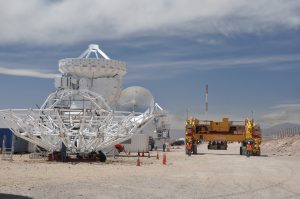
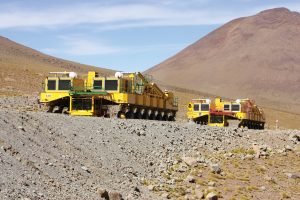
ALMA Transporters ascend to the high site
The two ALMA Transporters, giant 28-wheeled trucks that lift, power, and haul the telescopes for major servicing or during reconfigurations of the array. The one with the red accents is named Otto, after Otto Rettermaier, the president of Scheuerle, the company that made them. The one with the green assets is Lore, named for his wife.
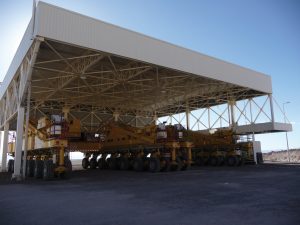
ALMA’s Transporters rest under cover
The two ALMA Transporters rest in their Sun-shelter at the ALMA Operations Support Facility n northern Chile. These giant 28-wheeled trucks lift, power, and haul the telescopes for major servicing or during reconfigurations of the array. The one with the red accents is named Otto, after Otto Rettermaier, the president of Scheuerle, the company that made them. The one with the green assets is Lore, named for his wife.
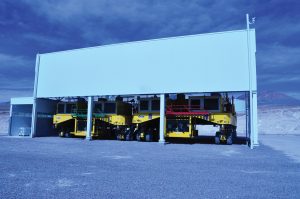
ALMA’s Transporter Garage from the back of the garage
The two ALMA Transporters rest in their Sun-shelter at the ALMA Operations Support Facility in northern Chile. These giant 28-wheeled trucks lift, power, and haul the telescopes for major servicing or during reconfigurations of the array. The one with the red accents is named Otto, after Otto Rettermaier, the president of Scheuerle, the company that made them. The one with the green assets is Lore, named for his wife.

Inside ALMA’s North American Antenna Assembly
A look inside the Vertex assembly building, the enclosed building where North American ALMA telescopes were assembled. Up to four telescopes were being built simultaneously inside this giant structure in northern Chile.
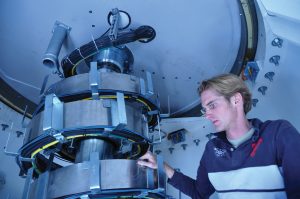
Inside an ALMA Antenna Base
ALMA engineer Lutz Stenvers examines the cable wrap inside the base of a North American ALMA telescope. The wrap ensures that the power and data cables do not tangle as the telescope quickly dashes to and from radio sources on the sky.





